7 Ways to Foster Self-Esteem and Resilience in All Learners
November 7, 2017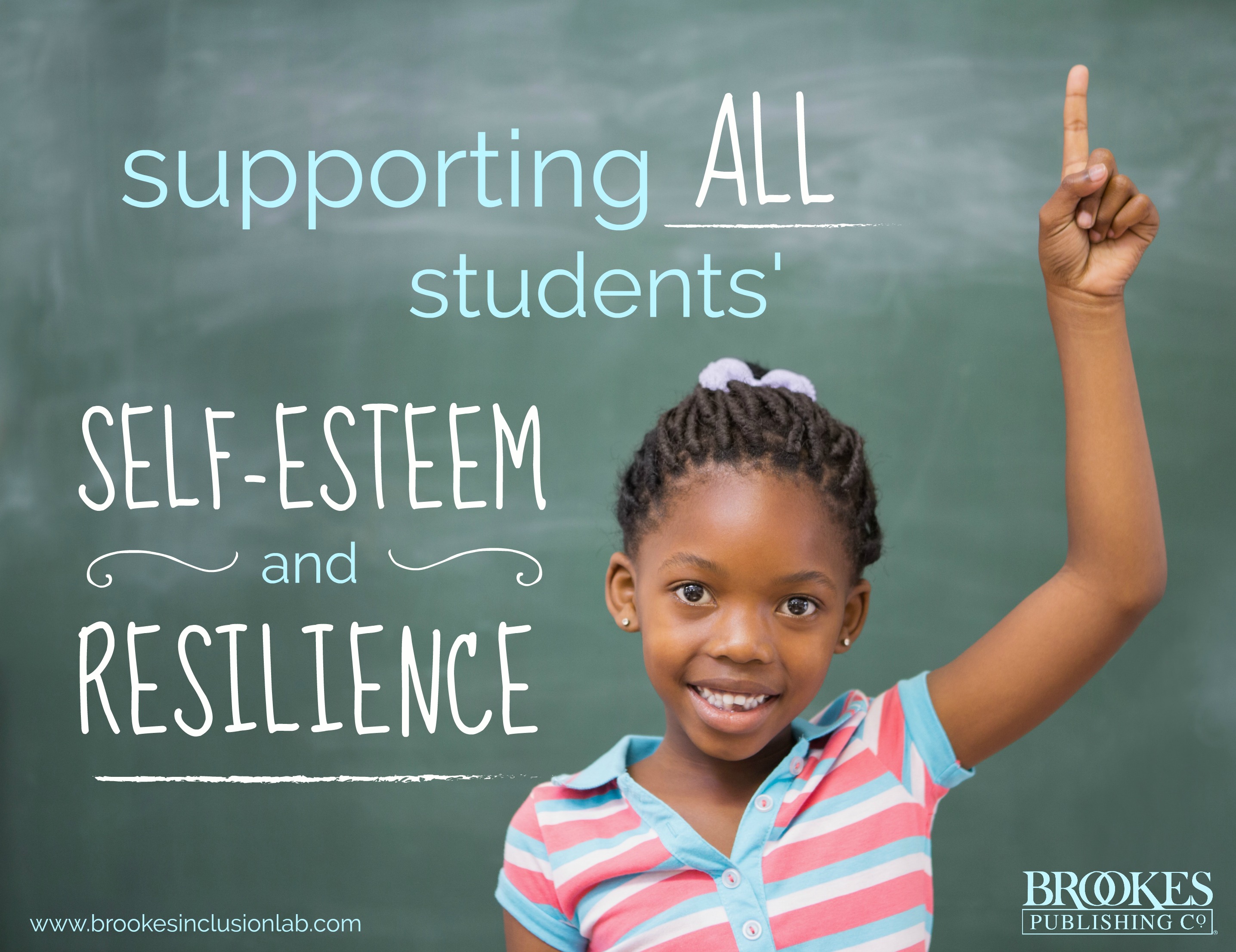
When you reinforce self-esteem and resilience in your students, you equip them with critical skills they need to succeed socially and academically. In today’s post, excerpted and adapted from Learning Disabilities and Challenging Behaviors, Third Edition, by Nancy Mather, Sam Goldstein, and Katie Eklund, you’ll find seven key strategies you can use to develop these strengths in learners with and without disabilities and build a more positive classroom climate.
Accept Students for Who They Are

Every child is unique–but sometimes, even teachers who embrace that idea may still treat their students as if they were a homogeneous group. When students are in a learning environment where everyone’s treated the same in the name of “fairness,” it can have a powerfully negative impact on self-esteem. Students whose needs aren’t being met may begin to feel they aren’t welcome, or that they’re disappointing the teacher by not living up to expectations.
What’s the solution? Establish realistic expectations, goals, and accommodations that respond to the unique strengths and needs of each child and help them succeed. And address the issue of “fairness” up front with your students so there’s no resentment of children who receive modifications and accommodations. As a new school year begins, discuss the differences among all your students and establish that there will be different expectations for the amount and kind of work done by each student. You might say:
“One of my concerns is that because of different expectations, some of you may begin to feel that I’m not being fair. If any of you begin to feel that way, please let me know so we can discuss it. This is very important because if students believe that things are not fair in a classroom, it can interfere with learning.”
Embracing the individuality of every student, providing accommodations when necessary, and explicitly addressing the issue of fairness will help create a learning environment that naturally fosters self-esteem and resilience. You’ll be able to meet each student’s needs without upsetting other students–and by educating students about individual differences, you’ll nurture tolerance and acceptance in your classroom.
Help Students Develop a Sense of Responsibility
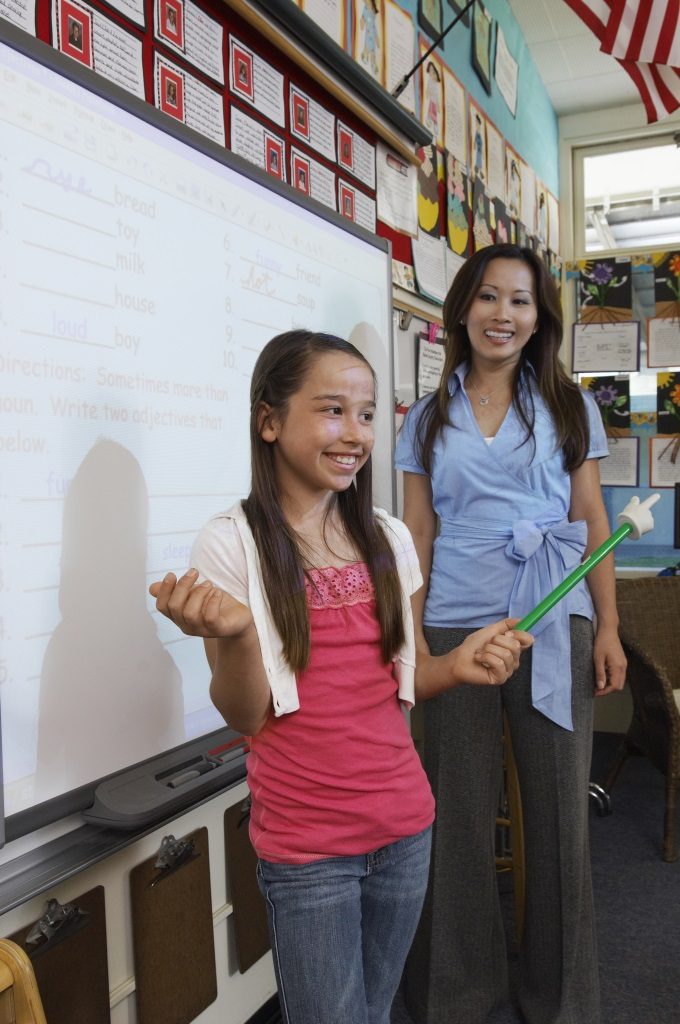 Making a positive difference in the school community is a great way to build students’ self-esteem and resilience. When students are encouraged to contribute to the community, it gives them a sense of ownership and pride. Look for special strengths, interests, and gifts in your students and help translate those gifts into responsibilities they can assume.
Making a positive difference in the school community is a great way to build students’ self-esteem and resilience. When students are encouraged to contribute to the community, it gives them a sense of ownership and pride. Look for special strengths, interests, and gifts in your students and help translate those gifts into responsibilities they can assume.
For example: one animal-loving young girl who struggled with memorization skills and social isolation was recruited as a “pet monitor” by her teacher. After excelling at taking care of the classroom’s gerbils and goldfish, she was then asked to write a short instruction manual (which was placed in the school library) and train other children on proper pet care. Taking on this responsibility helped her develop more confidence and perseverance, and she became more accepted in the classroom.
Increase Students’ Sense of Ownership
 It’s so tempting to solve students’ problems by telling them what to do–but it’s even better to give them opportunities to solve problems by themselves. When students believe they have some degree of control over their lives, that can be a big boost to their self-esteem and resilience.
It’s so tempting to solve students’ problems by telling them what to do–but it’s even better to give them opportunities to solve problems by themselves. When students believe they have some degree of control over their lives, that can be a big boost to their self-esteem and resilience.
Reinforce your students’ sense of ownership and control by providing them with decision-making opportunities, from choosing homework problems to brainstorming solutions to a class problem. For example, if your classroom has an ongoing problem with students making fun of each other, try this approach instead of constant verbal reminders:
1) Ask students if they think the teasing in their classroom is a problem (if the students say no, use their response to discuss why and how making fun of others interferes with a positive learning environment)
2) Ask the students to consider possible solutions to the problem
3) Attempt the solution that seems most likely to be effective
Encouraging students to solve problems on their own doesn’t mean you shouldn’t offer guidance (or intervene in a true crisis). But often, solutions devised by students themselves are more successful than those handed down by adults. Actively involving students helps them feel in control and reinforces their sense of ownership and empowerment–important ingredients in resilience and self-esteem.
Help Students Establish Self-Discipline
 Students who have trouble developing self-discipline also have more trouble developing self-esteem and resilience. These are the students who “act before they think” and often express opposition to limits, rules, and structure. To increase understanding of the need for rules–and motivation to follow them–involve your students in the process of establishing the classroom rules. Early in the year, you might ask your learners:
Students who have trouble developing self-discipline also have more trouble developing self-esteem and resilience. These are the students who “act before they think” and often express opposition to limits, rules, and structure. To increase understanding of the need for rules–and motivation to follow them–involve your students in the process of establishing the classroom rules. Early in the year, you might ask your learners:
1) What rules they think are necessary for both students and teachers to follow for the class to run smoothly
2) What the best ways are to remember these rules so that adults aren’t constantly reminding them
3) What the consequences should be if someone (including the teacher) forgets a rule.
When students help create the rules, they’re more likely to remember and adhere to them. (That’s not to say that ALL classroom rules are negotiable. You’ll have to set some basic ground rules for safety, for example.)
When students do break the established rules, try activities that help them reflect on their behavior and its effect on others. For example, an assistant principal of a middle school asked students to write or dictate a brief essay while they were in detention. They were given a choice of more than 30 topics, including what they would do if they ran the school, what they could do in the future to avoid detention, and what dreams they had about their future. Many students were able to reflect on their lives and behaviors and think about alternative ways of behaving in the future.
Promote Self-Advocacy Skills
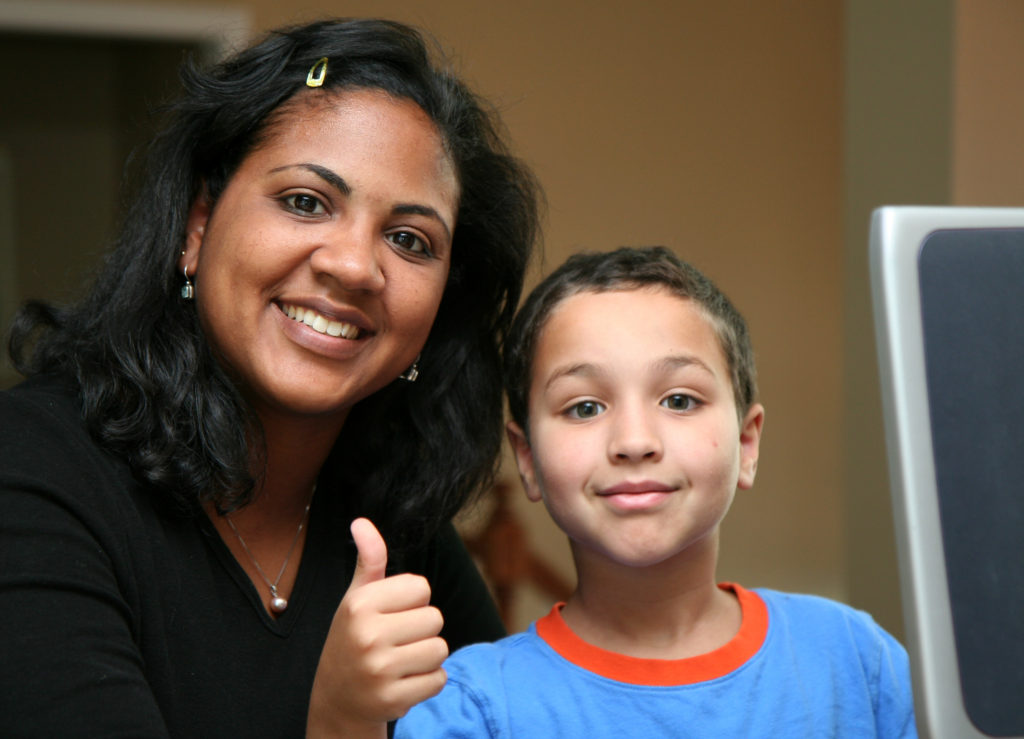 Strong self-advocacy skills lead to greater self-confidence, but many students with learning or behavioral challenges may struggle to develop these skills. How can you boost your students’ ability to communicate with teachers and advocate for their needs? You might try these steps:
Strong self-advocacy skills lead to greater self-confidence, but many students with learning or behavioral challenges may struggle to develop these skills. How can you boost your students’ ability to communicate with teachers and advocate for their needs? You might try these steps:
- Have a teacher or school mental health professional talk individually with a student about his or her learning needs to increase awareness of that student’s strengths and weaknesses.
- Identify ways in which students should approach their teacher or other school staff to communicate their needs. You could try writing a sample script of what a student might say, making a written list of steps that walk the student through the process, and/or having a student practice what to say.
- Provide follow-up sessions where the student can report back on the results of his or her initial attempts at communication.
Here’s an example of what this might look like in action:
Mr. Chavez, Jeremy’s teacher, described him as a “moving target who can’t control his movements.” Although Jeremy had been diagnosed with ADHD and was receiving medical treatment and counseling, he still had trouble following directions and completing tasks. One day, after blurting out a response in class, Jeremy explained, “I just can’t keep the words in my mouth.”
By working individually with Jeremy, Mr. Chavez began to help Jeremy problem-solve strategies for how to appropriately participate in classroom discussions. This included writing down any questions he had instead of blurting them out, counting to five silently in his head before raising his hand, and/or quietly asking a peer for help or assistance instead of always relying on Mr. Chavez. Mr. Chavez also role-played these scenarios with Jeremy to help him visualize what it may look like in the classroom setting. Holding an individual 10-to 15-minute meeting with Jeremy also sent the message that Mr. Chavez cared about Jeremy’s well-being and wanted to help Jeremy be successful in the classroom.
Provide Positive Feedback and Encouragement
 When you communicate genuine, realistic appreciation and encouragement to your students, it’s a powerful way to nurture self-esteem and resilience. Too often, though, the focus falls on students’ negative behaviors, and their positive gifts, qualities, and strengths aren’t sufficiently nurtured or recognized.
When you communicate genuine, realistic appreciation and encouragement to your students, it’s a powerful way to nurture self-esteem and resilience. Too often, though, the focus falls on students’ negative behaviors, and their positive gifts, qualities, and strengths aren’t sufficiently nurtured or recognized.
Emotional support and encouragement are simple and highly effective ways to promote students’ self-esteem and resilience. Make a consistent effort to focus more on your students’ positives than their negatives–and back that up with words and actions of support. They don’t have to be grand gestures: just writing a little note on a student’s paper praising her effort can increase her motivation and sense of self-worth. These small encouragements are especially crucial for at-risk students or learners with disabilities, who may feel discouraged when their progress is slow.
Teach Students to Cope with Mistakes and Failure
Fear of failure is a powerful thing. Most people worry at least a little about making mistakes and looking foolish in front of others. Don’t let fear of mistakes and failure affect your students’ success–intervene early by framing them as learning experiences.
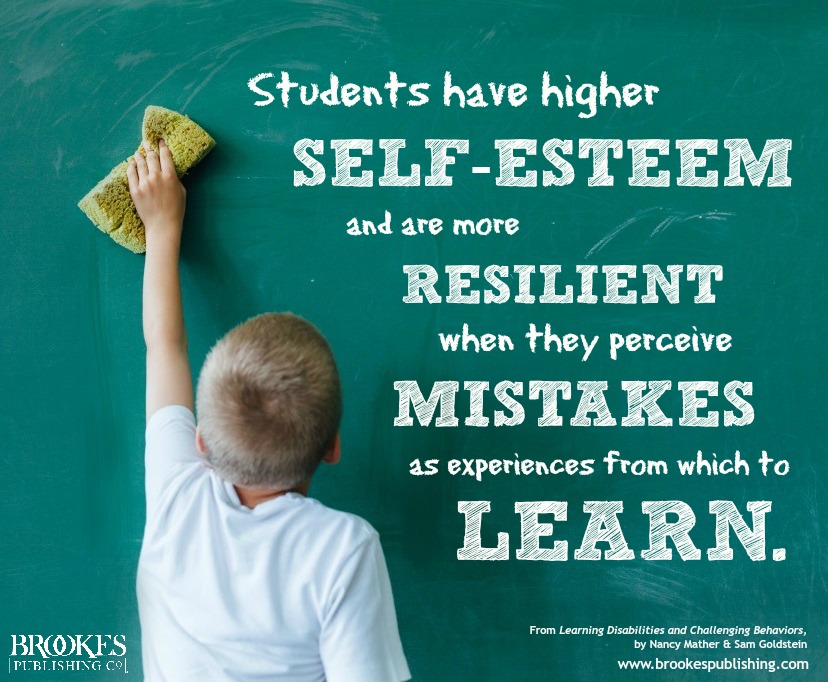
At the beginning of the school year, ask your class, “Who feels that they’re going to make a mistake or not understand something in class this year?” Raise your own hand right away, and then start a discussion on how the fear of making mistakes can affect learning. Involve the class in problem-solving by asking what you can do as their teacher and what they can do as class members to minimize the fear of failure. Explain to your students that not understanding material is to be expected and that your role is to help them learn.
Throughout the year, keep track of how you respond to your student’s mistakes. Do you overreact sometimes? Make statements in class or on papers that do more harm than good? Avoid cutting remarks like “How often do I have to repeat myself?” or “Were you listening carefully?” or “You would do okay if you only tried harder.” If a student has trouble listening carefully, it’s much more helpful to say something like, “I can see that those directions might have been too long and too confusing. Let’s try to figure out what each of us can do that will help.”
Keep an eye on how you handle wrong answers in class, too. If a student doesn’t know an answer right away or gets it wrong, don’t move on to another student immediately in search of the correct answer. Instead, try saying something like, “Let’s review how to solve that problem.” Using the student’s mistake as a teachable moment reinforces the message that people learn from mistakes (and at the same time, helps clarify the process for solving the problem for other students who don’t understand).
***
Want more guidance on helping students in Grades K”“12 who struggle with social and academic skills? Check out Learning Disabilities and Challenging Behaviors, Third Edition. The popular “Building Blocks” model in this book helps you target 12 school success factors, with proven strategies and guidelines you can use right away.



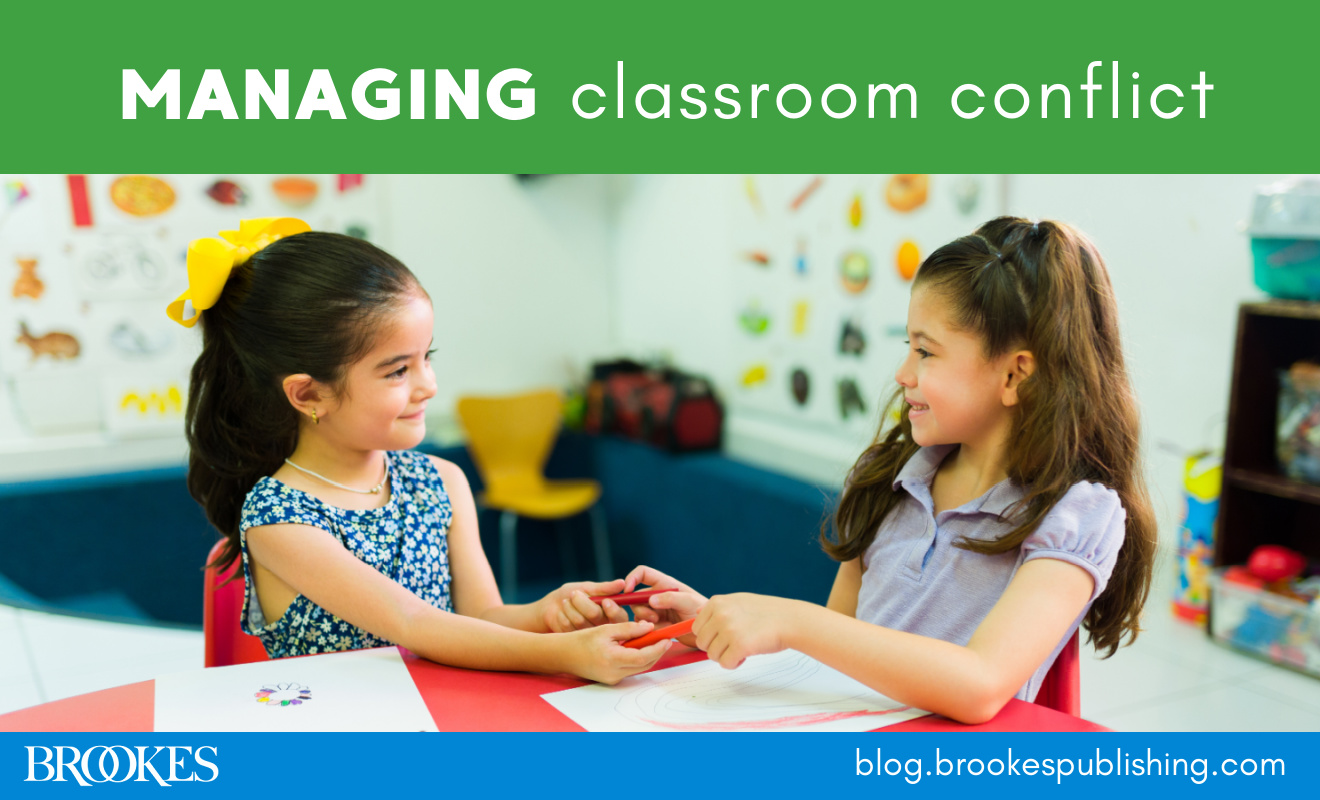
Write a Comment
Your email address will not be published. Required fields are marked *
comments
Cecille Roberts says
These are important tips for improving their confidence
Bharati Thakur says
it is important to develop these values in children as these values are the main part of education.
Chris Byers says
Love this! Thank you for sharing!
Wellbeing365 says
Love this, please write more like this again in the future!
Post a Comment